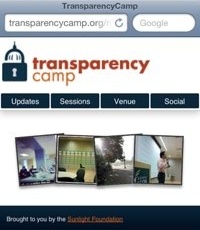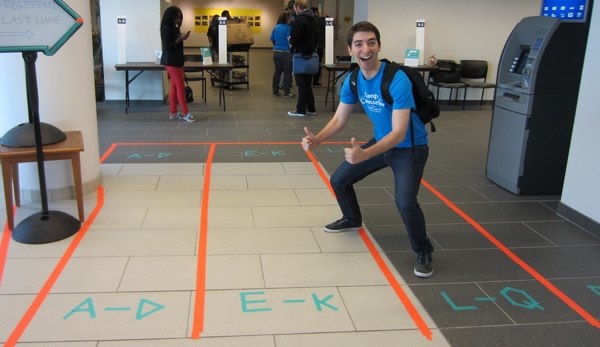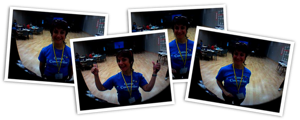The Tech Behind TransparencyCamp
TransparencyCamp, Sunlight’s open government unconference, is one of the few chances the Labs gets each year to go crazy with tech. Our goal is to use technology to enhance the conference experience and set the expectation for the type of “maker” culture we have here at Sunlight. Read on to find out some of the technology that makes TransparencyCamp run.
Web and Mobile Sites

Transparency Camp is somewhat of a hybrid unconference. A small number of sessions are planned in advance and we try to keep the session board as-is once it is initially set. One reason for this is that we have the sessions listed on the web site, mobile web app and screens at the venue. We just don’t have the resources to constantly monitor the board for changes and have that reflected on all of the other places sessions are listed.
When someone submits a session, it is manually entered into the TCamp database and a physical print-out is placed on the schedule board. The TransparencyCamp codebase includes an undocumented API that provides feeds of all upcoming sessions as well as the full conference schedule. The backend service also pulls in tweets from Twitter that match event-related hash tags and messages from the official TCampDC account.
The mobile app is an HTML-based site that has been tested on both iOS and Android devices. The app was built on a long outdated version of Backbone.js that gets sessions, tweets and photos from the TransparencyCamp API. The social feeds are updated every minute so attendees can watch the stream as it happens.
Etherpad
Each year at TCamp we want to provide a way for attendees to take notes during sessions. Last year we turned session pages into mini-wikis where users could click to edit the page to add notes. The usage, as we mostly expected, was disappointing. The user would have to click edit, make their changes, hope someone else hadn’t saved other changes in the meantime and then hit save. While not the most laborious process ever created, it was enough of a barrier to keep people from participating in note taking.
We’ve had great success with an internal instance of Etherpad here at Sunlight so Eric suggested we incorporate it into the TransparencyCamp site. If you are not familiar with it, Etherpad is a collaborative document editor much like Google Docs. We used the embeddable view and slapped a collaboratively editable document right onto each session page. Attendees could then immediately take notes without clicking around and without worrying about clobbering other people’s changes.
We found that many more people participated in note taking and those that did had nothing but great things to say about the experience. Etherpad really hit the sweet spot of collaboration that a wiki just couldn’t reach.
Optimizing Registration
It’s the little things that count. Most people, when setting up a 4-lane registration table, would just divide last names by first letter into even groups of four. But what if there isn’t an even distribution of last names? Andrew saw this potential inefficiency and sprung into action.
Armed with our list of registrants, he calculated the frequency of the first letter of the last names of attendees. The frequency results were then fed into a script that iterated through the possible partitions of the alphabet, selecting the partition that minimized the standard deviation of percentages of the alphabet of each partition.
 Nicko approves of the optimized registration lanes. Photo by stereogab.
Nicko approves of the optimized registration lanes. Photo by stereogab.
Photo Booth

While not necessarily new, Tim set up another instance of our Sunlight Photo Booth. It’s really just an iMac running our web-based Photo Booth software, but use your imagination here. The HTML user interface communicates with the backend over a WebSocket connection, which invokes isightcapture to take each photo. A Python script then uses PIL to add a Lomo-esque effect to each photo and combine them into a single strip. The generated strip is then returned to the web-based UI, uploaded to Flickr and a QR code is displayed that links to photo strip’s Flickr page. Whew!
2013?
We’ve already been discussing ideas for new tech at TransparencyCamp 2013: our own registration and payment processing system, wall-crawling robots to scan the schedule, RFID implants (badges, not people… okay, maybe people) and more. What will make the cut? Stay tuned!

